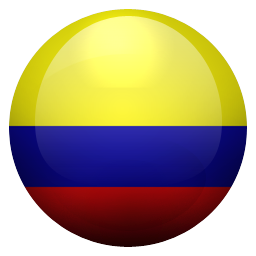Abstract
Nature is distinguished as a fluid and dynamic entity. We can establish that the processes of displacement, climatic events of the earth, human and animal behavior, are governed by fundamental fluids. These fluids and their forms depending on the viscosity of time understood as the difference in time fluidity. The fractal shapes that we perceive in nature, are the visible result of their dynamics and intrinsic reality. The fractal shape enables the fluids, allowing the creation of organisms. This aspect contrast, essentially with the functionalism and Euclidean geometry, that has characterized the built environment, since the beginning of the industrial revolution. The dissociative cutting edge, it has opposed systematically to the natural porous flow, and the edge heteronomous, characteristic of open biological systems. To generate a sustainable environment and an alternative city, operations in the living environment, including the architectural and urban planning, must be conceived in consonance with natural flows.
References
Burrough, P. (1981). Fractal dimensions of landscapes and other environmental data. Nature 294.
Bauman. (2000). Liquid modernity. Cambridge : Polity Press.
Carta de Megaride. Citta della pace, citta della scienza. (1995). Napoli : Universita degli studi di Napoli “Federico II”.
Coleman, P., & Pietronero, L. (1992). The fractal structure of the universe. Phys. Rep. 213.
Davies, P. (1996). Sobre el tiempo. Barcelona : Crítica.
Eisenman, P. (1988). Moving Arrows, Eros and Other Errors. Arquitectura, 270, Madrid.
Engels, F. (1878). Herrn Eugen Dührings Umwälzung der Wissenschaft. Leipzig.
Engels, F. (1947). Anti-Dühring. Herr Eugen Dühring’s Revolution in Science. Progress Publishers.
Engels, F. (1960). Anti-Düring. Montevideo : Ed. Pueblos Unidos.
Gleick, J. (1987). Chaos. Making a New Science. New York : Penguin Books. (versión castellana: Caos. La creación de una ciencia. Barcelona : Seix.Barral, 1998).
García Vásquez, C. (2006). Ciudad Hojaldre, visiones urbanas del siglo XXI. Barcelona : G.G.
Hawking, S. (1992). Historia del tiempo. Barcelona : Planeta Agostini.
Lanza, R., & Berman, B. (2010). Biocentrism. Dallas : Benbella books.
León, F. (1999). Metápolis, la ciudad deconstruida. Revista Astrágalo, 9. Madrid.
Llamosa Escobar, D. F. (2015). El complejo temporal de la ciudad. Labor & Engenho. 9(3) pp.58-73, jul./set. Unicamp. Campinas [SP] Brasil.
Llamosa Escobar, D. F. (2013). Más allá del borde, un reto para el mundo. Revista Hito, 27. Bogotá.
Llamosa Escobar, D. F. (2011). Acerca del acontecimiento. Revista Nodo. UAN. 6. Bogotá.
Lynn, G. (1998). Folds, Sodies & Blobs : collected essays. Bruselas : La Lettre Volee.
Mandelbrot, B. B. (1982). The fractal geometry of nature. San Francisco : W. H. Freeman & co.
Peitgen, H., & Richter, P. (1986). The beauty of fractals. Heidelberg: SpringerVerlag.
Pope, A. (1996). Ladders, Architecture at Rice. New York : Princeton Architectural Press Houston.
Rogers, R. (2010). Ciudades para un pequeño planeta. Barcelona : G.G.
Rossi, A. (2000). Autobiografía Científica. Barcelona : G.G.
A Labor e Engenho utiliza a licença do Creative Commons (CC), preservando assim, a integridade dos artigos em ambiente de acesso aberto.


